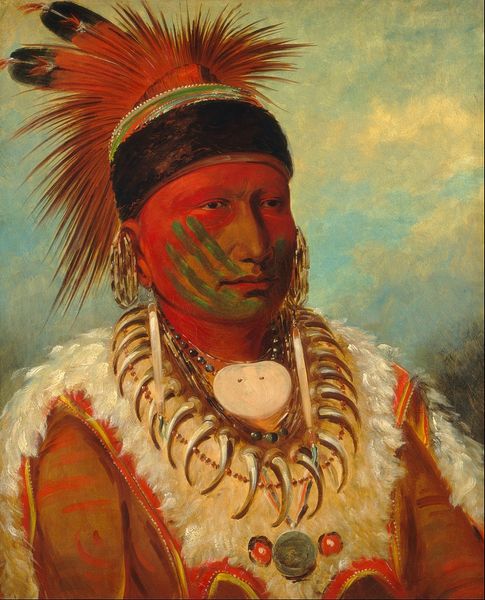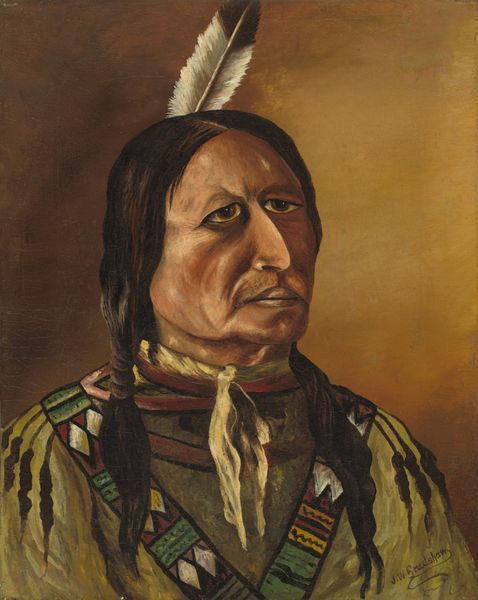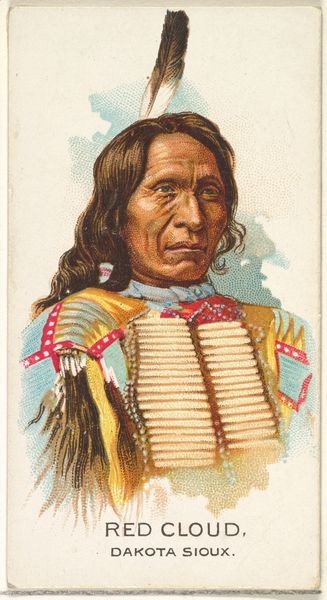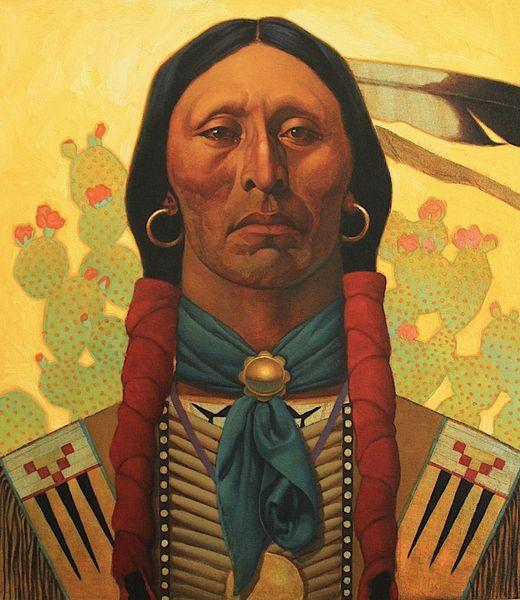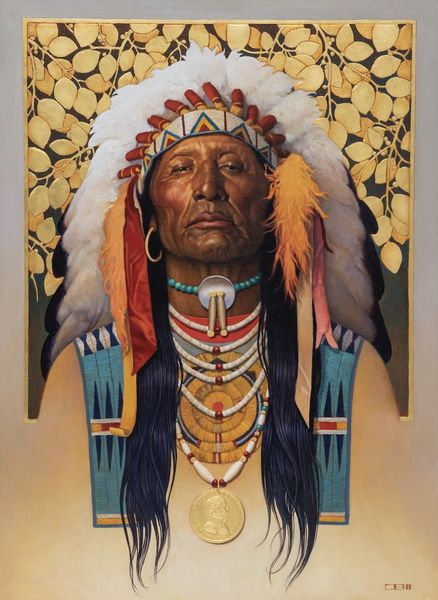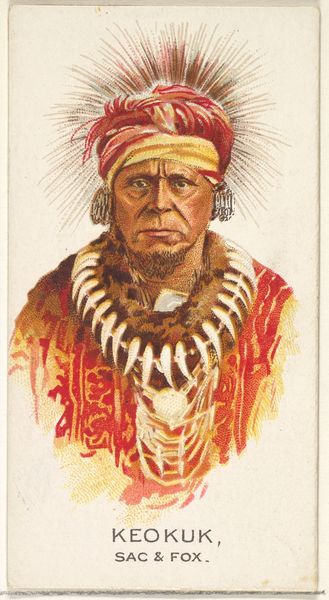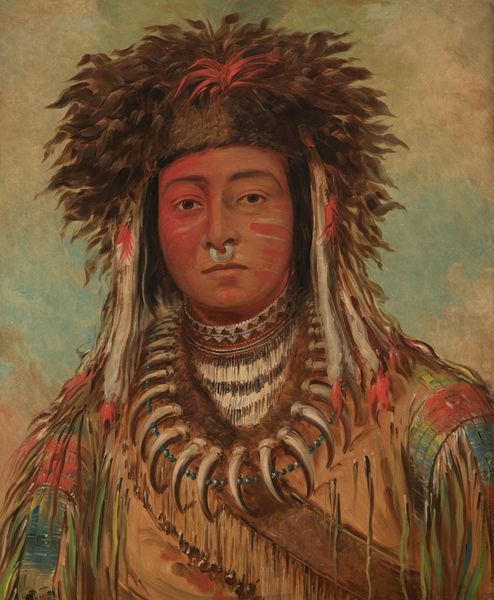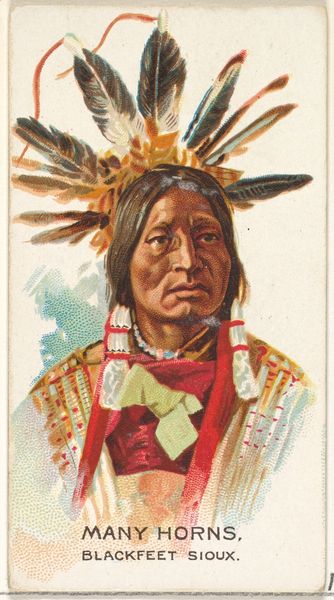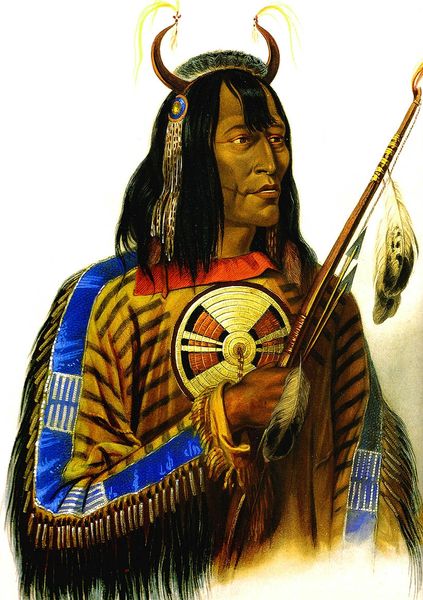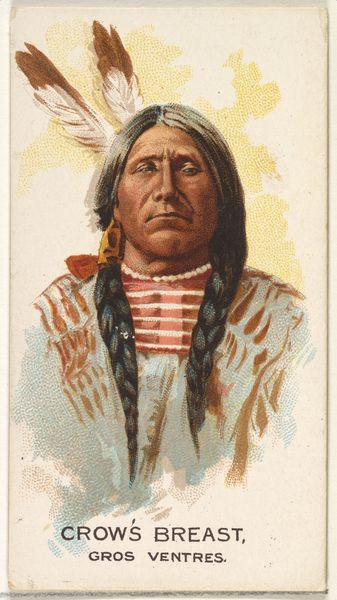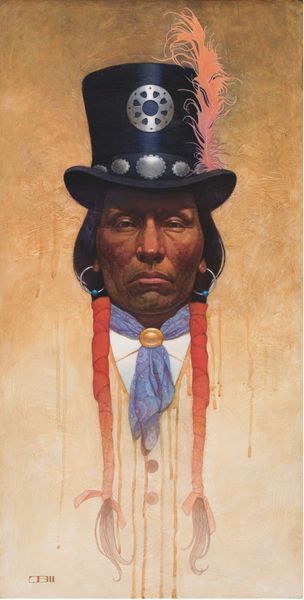
Buffalo Bull's Back Fat (Stu-mick-o-súcks) Head Chief of the Blood Tribe (Blackfoot) 1832
0:00
0:00
painting, oil-paint
#
portrait
#
painting
#
oil-paint
#
romanticism
#
portrait art
Copyright: Public domain
Editor: So here we have George Catlin’s "Buffalo Bull's Back Fat, Head Chief of the Blood Tribe," painted in 1832 using oil paints. There's a real intensity to his gaze and the red paint on his face. What stands out to you about this portrait? Curator: The intensity you notice speaks volumes. Catlin's work, while seemingly a straightforward portrait, exists within a complex historical context. What sociopolitical dynamics do you think were at play during the painting of Indigenous leaders? Editor: I imagine that given the time period there was a big power imbalance and colonization occuring? Curator: Precisely. Catlin’s project was underpinned by the expansionist ideologies of the 19th century. He saw himself as documenting a vanishing race, yet his presence was complicit in that very vanishing. This portrait, then, becomes a site of negotiation – between the artist's romantic gaze and the Chief's assertion of presence. Consider the details: The elaborate headdress and ornamentation reflect his status, but how might these details also have been interpreted by Catlin's audience? Editor: It feels like a romanticization, almost exoticising of the Chief. Is it fair to say it presents a potentially skewed depiction of the man and his position? Curator: Exactly. The "romantic" aesthetic flattens the lived realities into types. Thinking intersectionally, how do race, power, and representation collide in this artwork? Editor: I guess it makes you question the role of the artist, and how historical context informs art. Thank you! Curator: Absolutely. Let's not shy away from critiquing the past and continuously challenging perspectives!
Comments
No comments
Be the first to comment and join the conversation on the ultimate creative platform.

